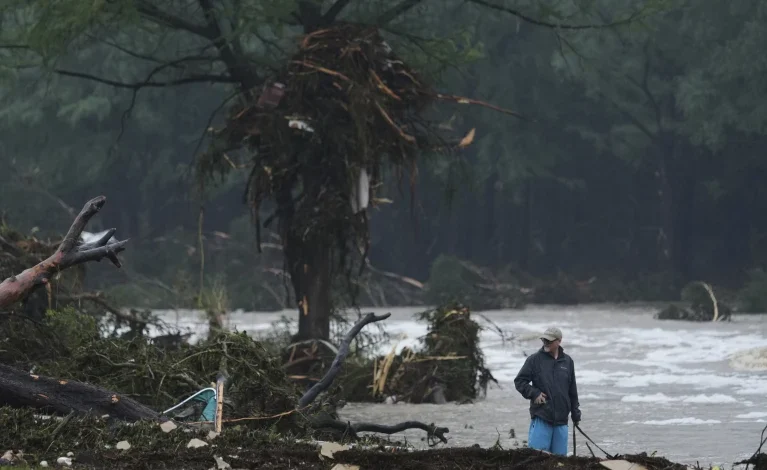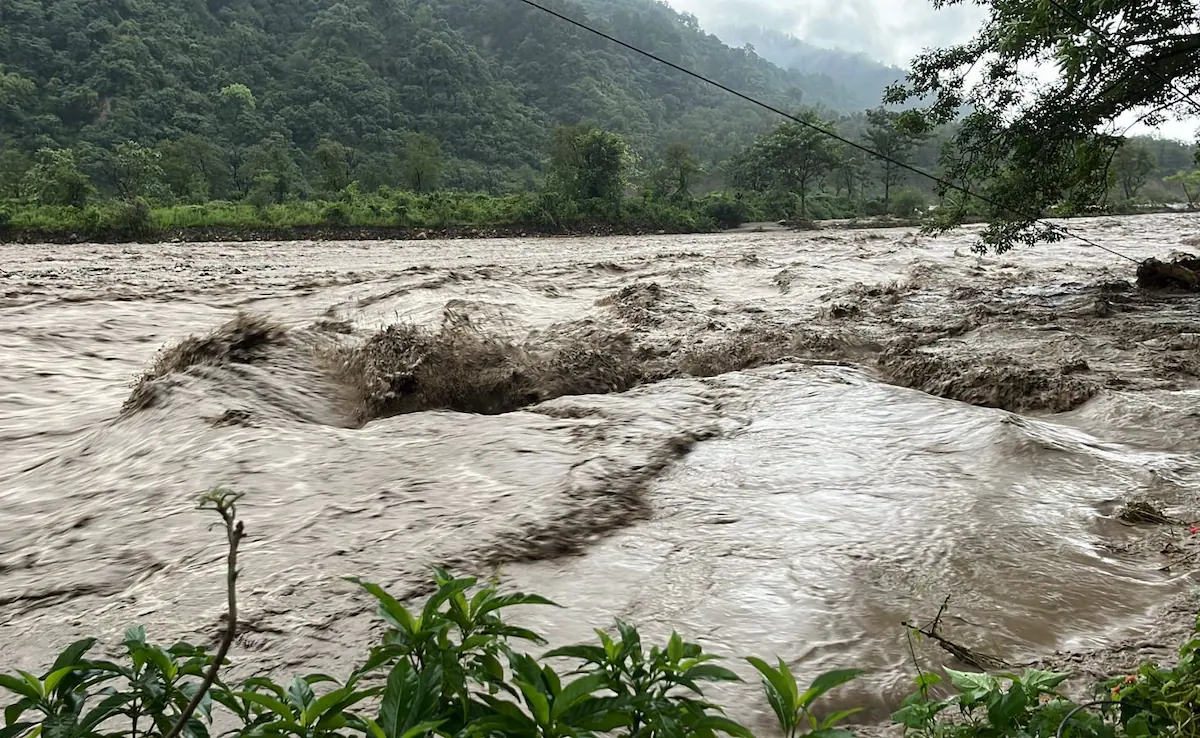Texas Hill Country Floods 2025: Death Toll Rises to 25 as Camps Washed Away
In one of the most tragic natural disasters in recent years, the Texas Hill Country flood has left more than 25 people dead, hundreds displaced, and communities in shock. Unprecedented rainfall during the early hours of July 4, 2025, triggered massive flash floods, especially impacting areas along the Guadalupe River, including Kerr County, Kendall County, and the small town of Hunt.
Rainfall Like Never Before
The storm system delivered multiple months’ worth of rain within just a few hours, causing rivers and creeks to rise alarmingly fast. The Guadalupe River alone surged over 26 feet in just 45 minutes, peaking close to 30 feet, marking one of the highest levels ever recorded in the area.
This rapid rise gave residents little to no time to evacuate. The National Weather Service had issued flood watches, but the sheer speed and volume of water overwhelmed both infrastructure and emergency protocols.
Campgrounds Turned Into Danger Zones
Among the hardest-hit areas was Camp Mystic, a popular summer camp for girls, situated along the riverbanks in Hunt, TX. Dozens of campers and staff were caught off guard when the water rose in the middle of the night. Many cabins were washed away completely.
At least 23–25 girls were reported missing, and some fatalities were confirmed from this location. The devastation at Camp Mystic has drawn national attention, with rescue operations still underway days later.
Another fatality confirmed was Jane Ragsdale, the long-time director of the neighboring Heart O’ the Hills Camp. She was known for her decades of service to the youth and the local community.
Rescue and Recovery in Full Force
The state of Texas launched one of its largest coordinated rescue efforts in recent memory. Over 500 personnel, 14 helicopters, 12 drones, and multiple swift water rescue units were deployed. As of the latest updates, over 237 individuals have been rescued, and dozens more remain unaccounted for.
Governor Greg Abbott and Lieutenant Governor Dan Patrick issued immediate disaster declarations for the affected counties. The state is working closely with FEMA to expedite federal aid and support search and recovery efforts.
Emergency shelters have been set up across the region, and many residents have been relocated from dangerous areas as creeks continue to rise.
A Wake-Up Call for Flood Preparedness
This tragedy has raised critical questions about flood preparedness and communication systems. Although weather alerts were issued, residents reported not receiving local emergency notifications, and many camps lacked dedicated evacuation protocols.
The rapid rate of river rise left little room for traditional responses. Experts are now calling for updated flood alert systems, community drills, and infrastructure improvements, particularly for vulnerable riverside facilities such as camps and recreation parks.
Why Was This Flood So Severe?
Meteorologists say the Texas Hill Country flood was caused by a stationary thunderstorm system that dumped inches of rain over already saturated ground. The unique topography of the Hill Country—marked by limestone, thin soil, and steep valleys—created the perfect scenario for extreme runoff.
Combined with urban expansion and poor drainage in some areas, the region became a funnel for flash flooding.
Climate scientists are also weighing in, noting that climate change is increasing the frequency and intensity of such extreme weather events. Warmer air holds more moisture, which means storms can now release more rainfall in a shorter period.
Community Response and How to Help
Despite the devastation, stories of heroism and compassion are emerging. Local volunteers, church groups, and non-profits have joined hands to offer food, shelter, and medical assistance. Donation drives have been initiated across Texas and nationwide.
If you want to support relief efforts, consider donating to:
-
Texas Disaster Relief Fund
-
Red Cross Central Texas
-
Camp Mystic Rebuilding Initiative
These organizations are working directly with the affected families and survivors.
Conclusion
The Texas Hill Country flood of July 2025 is a stark reminder of the fragility of life and the raw power of nature. With dozens dead, many still missing, and entire communities displaced, Texas faces not only a recovery effort but also a period of reflection on how to prevent such tragedies in the future.
As search-and-rescue missions continue, the hope is that lessons learned will lead to better preparedness, stronger infrastructure, and more resilient communities in the face of a changing climate.









